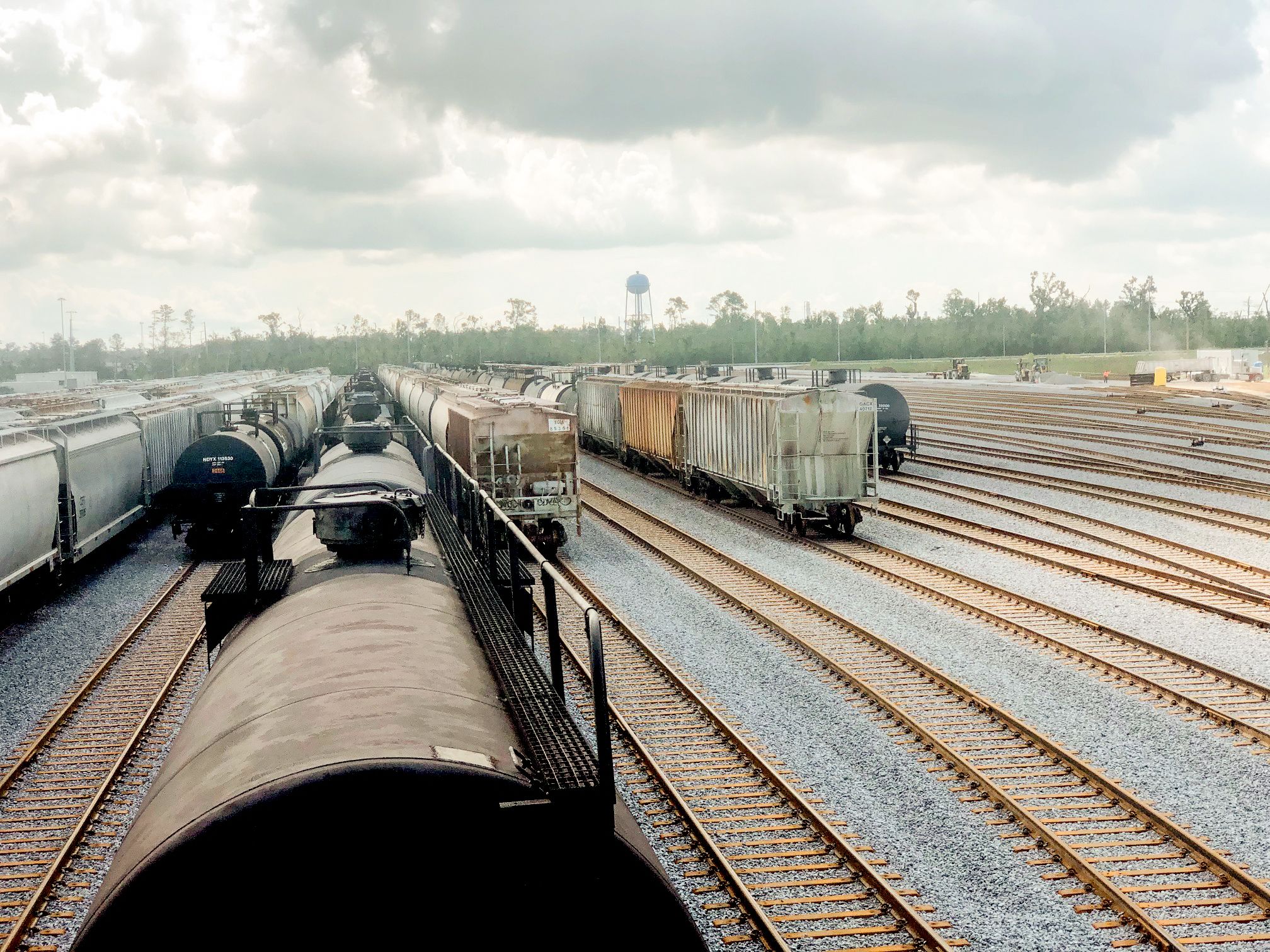The developers of the new Mossville Rail Port are benefitting from some rather fortuitous timing.
Both phases of their multimodal facility will soon be operational, at a time when industrial owners in the Lake Charles area are searching for ways to remedy delays in receiving and shipping product.
Under construction since April, the first phase of the rail yard was completed Oct. 5 and a second phase will be operational three months early in November. Savage is partnering with Kansas City Southern to construct the rail port, which will have transload and railcar storage capabilities.
Savage will own and operate the rail port on property leased from KCS. Mike Miller, vice president of business development at Savage in Midvale, Utah, says recent supply chain challenges have made rail ports an attractive shipping alternative.
“This site allows customers to ‘forward position’ their rail cars so that they’re a moment’s notice away from their site,” Miller says. “That makes them a lot more efficient, enables more production runs and ultimately helps them move a higher quantity of materials.”
A new way to Chicago
Logjammed suppliers eye Louisiana as a potential multimodal hub for imports. Read the story.
The rail port is part of the Savage Transload Network of about 50 multicommodity, rail-connected terminals across North America and is the first developed in partnership with KCS. The facility comprises more than 70 transloading spots for moving chemicals, refinery products and other materials between trucks and railcars.
It also has 600 spots for railcar storage, enabling plants, refineries and other area businesses to store railcars closer to their facilities; it also provides access to Mexico on KCS rail lines.
Miller says some area customers actually provided input during the design of the rail port’s storage yard, transit yard and transload area (where the product will be moved from one mode to the other).
“Our engineers design a project from an operator’s standpoint, working with the railroad and customer in looking for a better way to build the facility,” he adds. “That helps us understand how they want their product moved and the time it takes to move it, and the operational plan around that.”
Designed for multiple customers, the rail port will provide the ability to transload or store rail cars transporting a variety of products, such as dry bulk, liquid bulk, hazardous or non-hazardous. “All rail movements to and from the facility will be handled by KCS, and all rail movements and management of materials on site will be handled by Savage,” Miller says.
The investment was prompted by an increased demand for rail car movements in Southwest Louisiana, a pattern similar to what Savage has noticed across the U.S.
“A rail car can hold four truckloads,” says Dan Price, vice president of business development and operations for Savage in Schererville, Ind. “The trucking market is very tight, so rail is a good way for customers to place inventory close to a plant or close to market. There are also benefits in the carbon footprint that rail can bring versus truck.”
A shortage of everything
Read more about industrial supply chain challenges in Louisiana.
The site can receive inbound products by truck that can then be loaded onto rail cars, or vice versa. “In some cases, we even have products that arrive by rail, then turn around and leave by rail,” Price adds.
Savage already has a presence in South Louisiana, with the bulk of its local customers in the industrial market. That’s not necessarily the case in other regions. Savage’s transportation, logistics, materials handling and DBOOM (design, build, own, operate, maintain) services can help businesses of all types and sizes move and manage bulk materials.
Typically, they adapt their facilities to meet the needs of a specific region. “In Mossville, we’ll offer a combination of rail car storage as well as transloading,” Miller says. “That’s heavily needed to support industry in the area.”
Read the entire digital Fall 2021 edition of 10/12 Industry Report.








